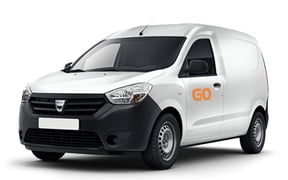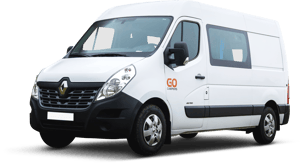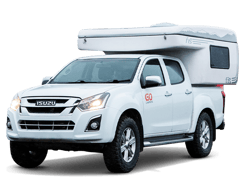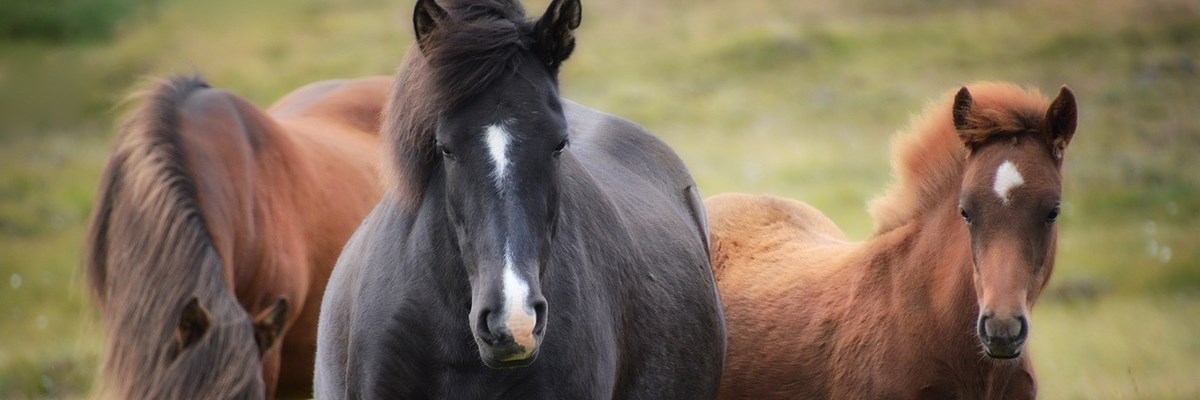
Icelandic Horses: Everything You Need to Know
Go to chapter
- What Makes the Icelandic Horses so Unique?
- History of the Icelandic Horse
- The Icelandic Horse Today
- Their Personality & Characteristics
- Why Do Icelandic Horses Have So Many Gaits?
- What Are the Horses in Iceland Used For?
- Are They Good for Beginners?
- Can You Ride Them Year-Round in Iceland?
- Where Can You Go Horseback Riding in Iceland?
What Makes the Icelandic Horses so Unique?
Delve into the fascinating world of Icelandic horses with our comprehensive guide that covers everything you need to know about these unique and charming equines. As you plan your journey to discover the beauty of these horses against Iceland's stunning backdrop, consider the convenience of a campervan rental Iceland. Our campervans not only provide a comfortable means of travel but also grant you the flexibility to explore the countryside and meet these majestic creatures on your own terms. From the distinctive tolt gait to their friendly nature, Icelandic horses are a testament to the country's rich equestrian heritage. With our campervan rental services, you have the freedom to visit various horse farms, ride through scenic landscapes, and immerse yourself in the world of Icelandic horses. Uncover the charm and grace of these unique animals while enjoying the autonomy that comes with a campervan rental in Iceland.
If you’re planning a trip to Iceland and you’re a horse lover, don’t miss the opportunity to experience Iceland’s native horse, a breed that has been developed and preserved for over 1,000 years. The Icelandic horse is an incredibly unique animal with a fascinating history and hundreds of years’ worth of stories to tell.
In addition to their beauty and gracefulness on the ground, many people are surprised to learn that these horses are also capable of performing natural gaits while they are being ridden. Most commonly these include trotting (two-beat gait) and cantering (three-beat gait), but some are even known to perform the rarer ambling gait.
They are also famous for the diversity in colour - be it bay, brown, chestnut, grey, skewbald,
History of the Icelandic Horse
Icelandic horses are the only breed of horse native to Iceland. The first written reference to the breed dates to 982AD, but they were likely brought to Iceland by Norse settlers, or Vikings, centuries before that. The Vikings used these sturdy viking horses as pack animals and for pulling carts, as well as racing them on flat plains where they could run at top speed without having obstacles in their way—a sport known as tölt (or "speed-riding").
While these strong and fast animals were originally bred for work purposes, today they've become popular all over Europe because of their athleticism, high level of intelligence and unique gaits. The International Federation of Icelandic Horse Associations is partly responsible for this popularity as it promotes this unique breed around the world.
One fun fact is that there are more Icelandic horses outside of Iceland than inside. This is because once a horse is exported, they can never return. That way the population of these animals in Iceland is protected from potential diseases from abroad. Farms that have Icelandic horses for sale have to abide by strict rules and regulations in line with the Icelandic law.
If you're looking for a companion animal or a riding horse to have a break from the camper van and explore Iceland, then there's no better choice than this ancient breed.
Regardless of their origin story, these horses are sturdy yet friendly animals with plenty of stamina who can endure tough conditions like cold weather or cross rough terrain while remaining easy-going with people around them. You’ll often see other visitors on the side of the road who have stopped to say hello to a group of horses, all of them vying for attention and posing for selfies.
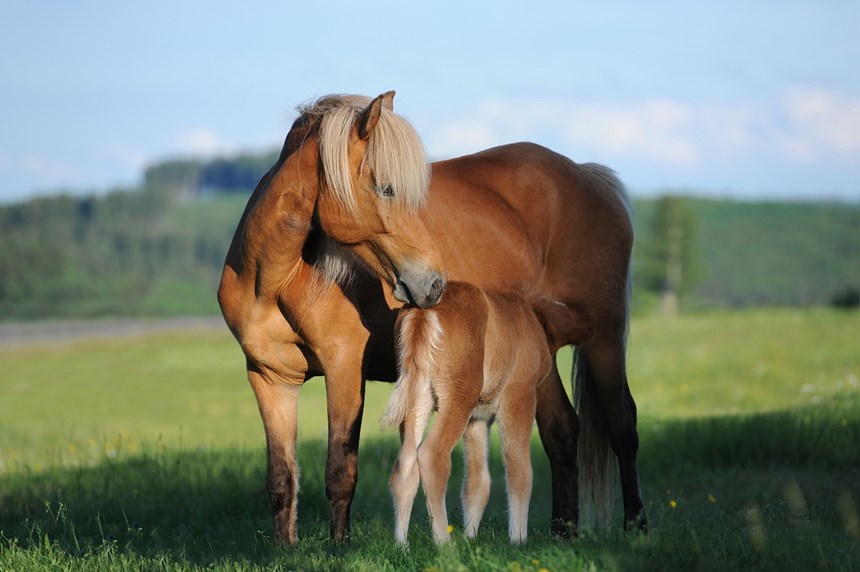
The Icelandic Horse Today
The average size of an Icelandic mare (female) or stallion (male) ranges between 13-15 hands high at the withers—about 142–152 cm tall at their shoulders—and weight between 450–650 lbs., depending on gender and age. Their small stature makes them very agile on land; however, their short legs make them unsuitable for swimming due to their inability to paddle properly underwater when crossing rivers or lakes!
Today, they are still an important part of Icelandic culture and tradition. The horses are ridden and used for working on farms. They are also often used in racing, jumping competitions, and other events such as parades. You’ll see them in all parts of the country.
Their Personality & Characteristics
The Icelandic horse is a small, strong, and powerful breed. Known for their stamina and endurance, they have the four commoon gaits: walk, trot, canter, and gallop. The fifth gait of the Icelandic horse is called tölt. This gait is like that of some other breeds but has a unique method. When they're moving at speed, their legs move underneath them in unison rather than one after another as seen in other breeds.
Personality-wise, the Icelandic horse is known for its calm and gentle nature. They are very tolerant and friendly, which means they are good with children, other animals, and even new riders. They have a naturally sweet disposition that makes them ideal for saying hello to during your ring road campervan trip.
They can be ridden by beginners as well as experienced riders alike, making them suitable for all ages. Their temperament is easy-going and affectionate, so they love being around people. To add a horse-riding tour to your camper van itinerary, make sure to browse our range of partner tours.
Why Do Icelandic Horses Have So Many Gaits?
Capable of one more gait than other horses, they are unique in the world of horses. And the answer to the question of why they have this extra gait lies in their genetic makeup.
The Icelandic horse was originally bred in for use on farms, so they needed to have a variety of different gaits so they could travel over rough terrain without requiring any special training or equipment.
The five natural gaits available to the Icelandic breed are:
- Canter - This is where all four feet move simultaneously
- Trot - When one foreleg moves forward while the other hind leg moves back at the same time
- Walk - Three feet on one side move together, then three feet on the other side move together, then repeat
- Pace - Two legs on either side alternate movements (like how humans walk)
- Tölt (in the Icelandic language) - One front footstep forward while two legs behind it take off from the ground. This is the special gait only used by Icelandic horses. It's sometimes called the Flying Pace.
What Are the Horses in Iceland Used For?
Bred for strength and endurance, they are well-suited to a wide variety of uses. The Icelanders use their horses for riding, driving, and racing. They also eat meat from these animals. The Icelandic horse is an excellent worker because of its strength and toughness—it can pull a cart or plow through snow-covered fields without getting tired.
In addition to being used for labor purposes, they excel in competitions such as shows or races where they are evaluated on beauty as well as their performance abilities (such as speed).
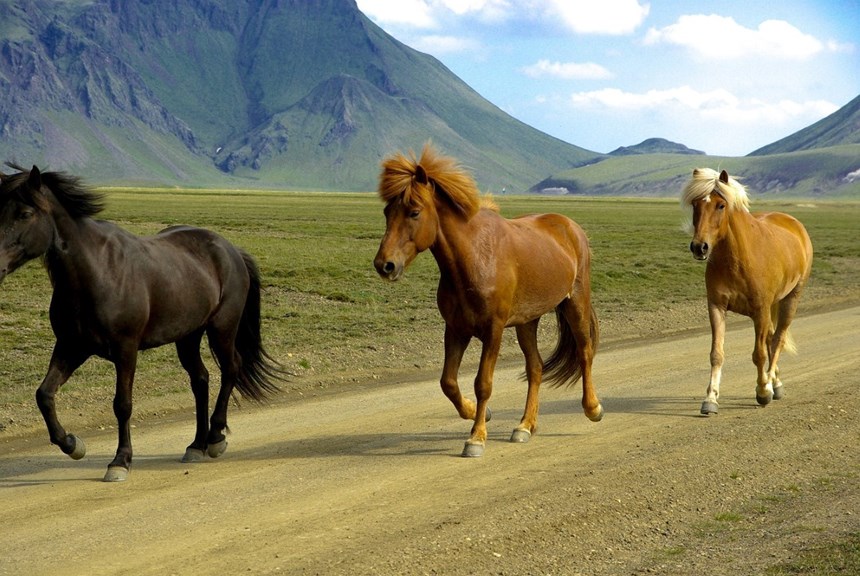
Are They Good for Beginners?
It's a breed that can be very easy to ride. They are good for beginners, as they are mild-tempered and easy to handle. In fact, most people with no riding experience will find that the Icelandic horse is an excellent first horse because it has such a calm demeanor.
They aren't the only fun animals you can see in Iceland – check out our map of puffin locations as well!
Can You Ride Them Year-Round in Iceland?
Yep, you can ride the horses year-round in Iceland. They are very hardy and can withstand the harsh Icelandic climate – including the windy and cold winters. The horses have thick coats of fur, which keeps them warm when Iceland plunges into darkness from November until March. In fact, the cold and rain don't bother them at all. If only we humans could be as hardy.
If you are visiting in the wintertime you will notice how many horses are allowed to grow their coat to extreme lengths. This is part of their natural adaptation to the cold winter climate.
If you are visiting in the summertime, you might want to explore Midnight Sun Horseback Riding tours. Some farms offer this option as it generally does not get dark in Iceland during the summer.
Where Can You Go Horseback Riding in Iceland?
If you’re visiting Iceland, there is no shortage of places to go horseback riding. You can ride while enjoying views of the beautiful Icelandic nature - along the beach, through forests, over mountains, and even on a glacier! Check out our chosen partner’s range of horse-riding tours to add to your campervan road trip in Iceland. They are led by tour guides and some offer refreshments such as coffee or hot chocolate.
Generally speaking there are horse farms all around the country. You can find many in the north of Iceland, for example around Akureyri or Sauðárkrókur. You can also find some farms in the east around Egilsstaðir.
But the South Coast is probably the place where you'll find the biggest number of such farms. Many are found around the towns of Selfoss, Hella and Hvolsvöllur. For something closer to Reykjavík, Mosfellsbær and Mosfellsdalur are good options.
If you’re planning a trip to Iceland, you can’t miss the opportunity to experience Horse Riding Iceland.
Go Back
Related articles
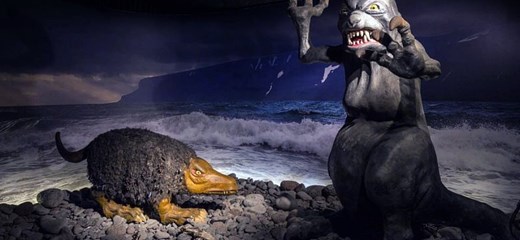
6 of Iceland’s Strangest Museums
Travelling across Iceland, you’ll find that in almost every town there will be a museum, detailing everything from its Viking history and settlement to the immense power of the glaciers and active volcanoes.
Read more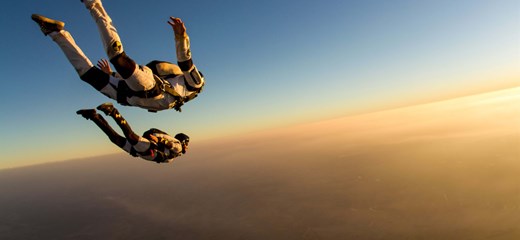
The Best Extreme Adventure Activities in Iceland
Extreme adventure activities in Iceland are unlike anywhere else. Diving, snowmobiling, ice-climbing, and white-water rafting is just a small dose of what’s available.
Read more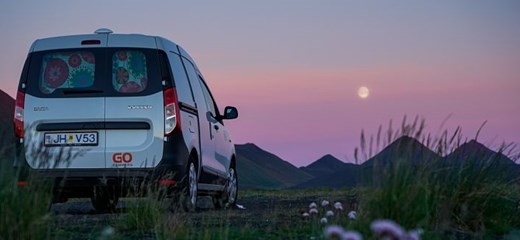
North Iceland: The Ultimate Guide
Sparsely populated farm country, fog-laden fishing villages clinging to coastline, snow-capped peaks towering above icy blue fjords, and landscapes formed by violent and powerful volcanic activity. Welcome to the north of Iceland.
Read more James Taylor
James Taylor